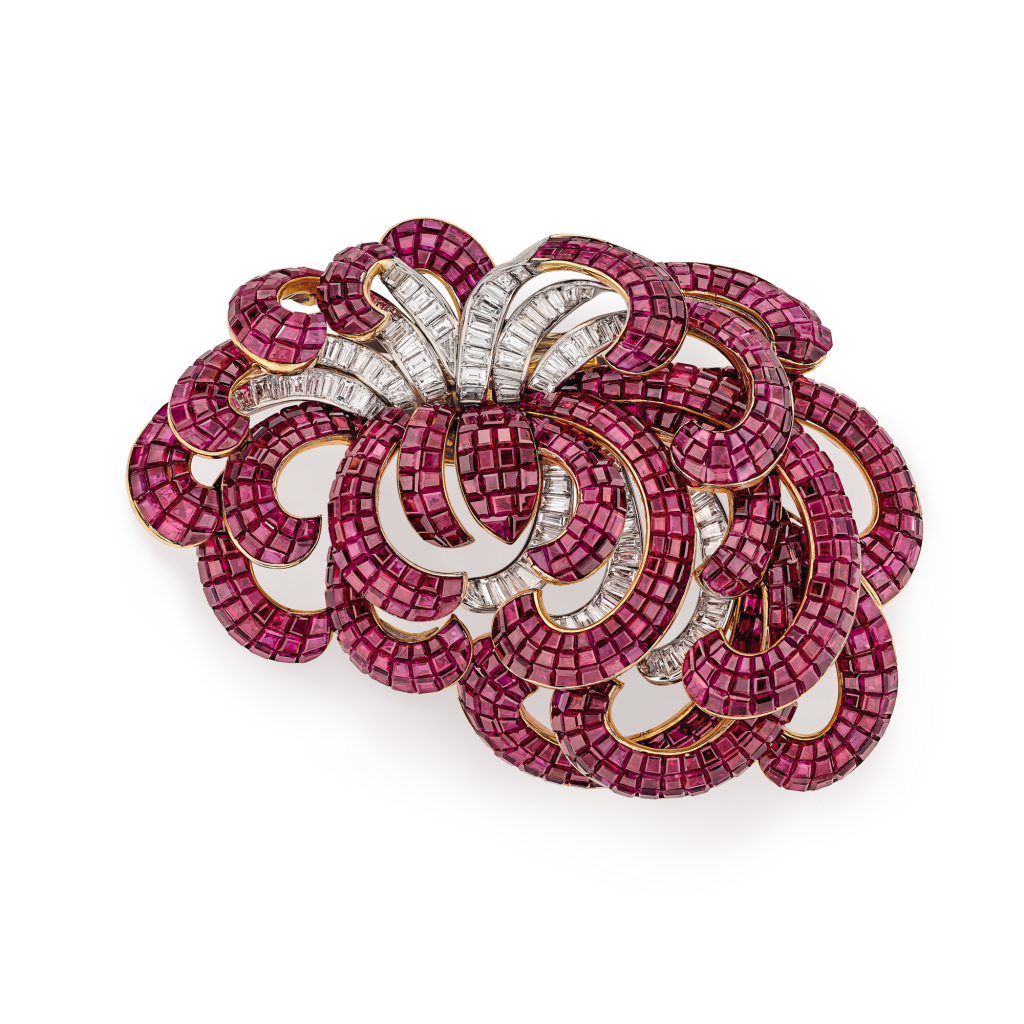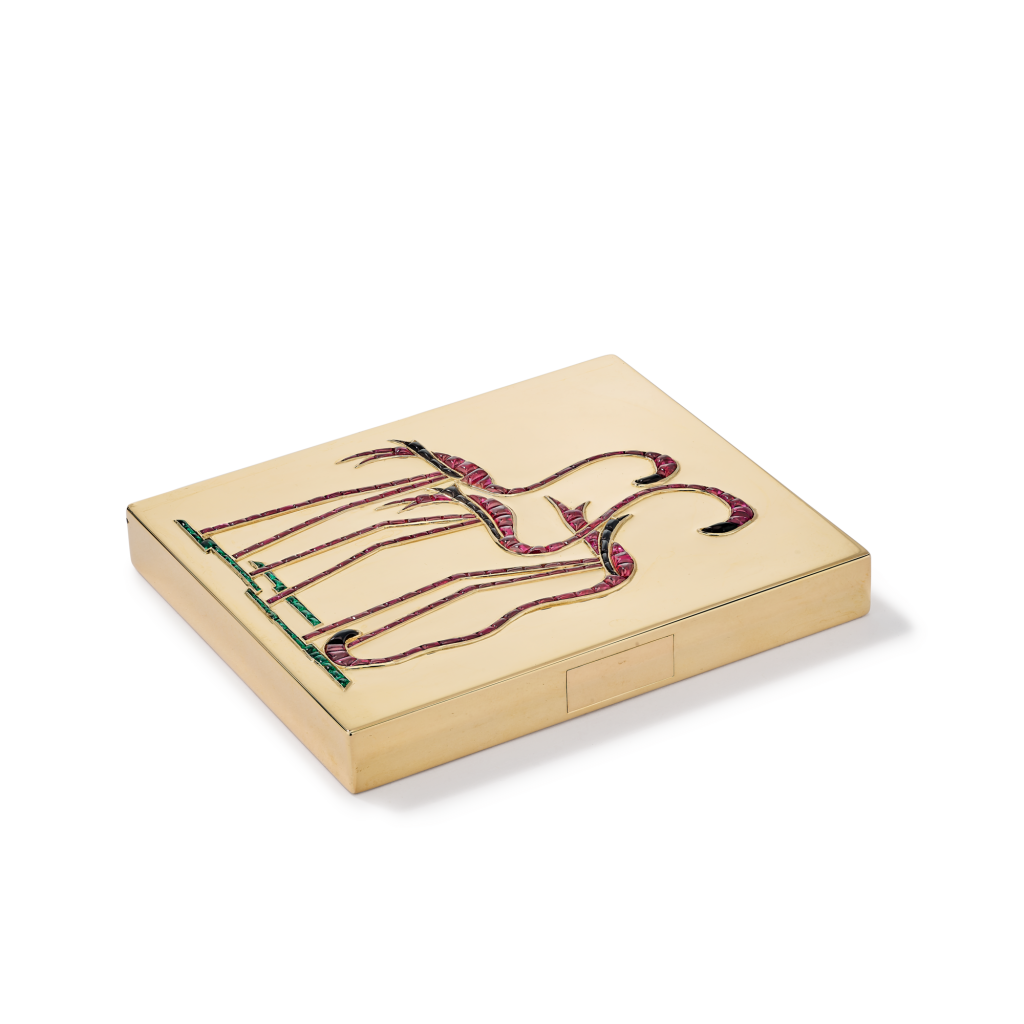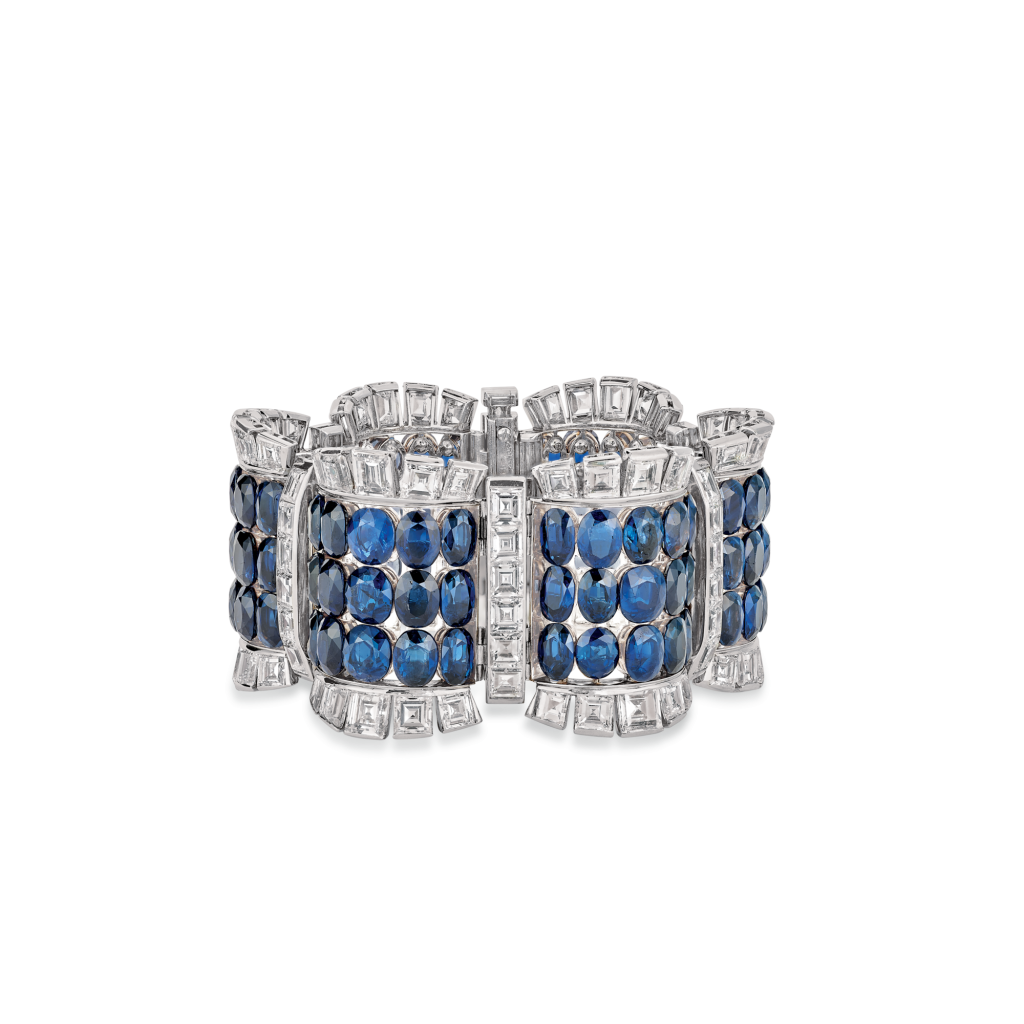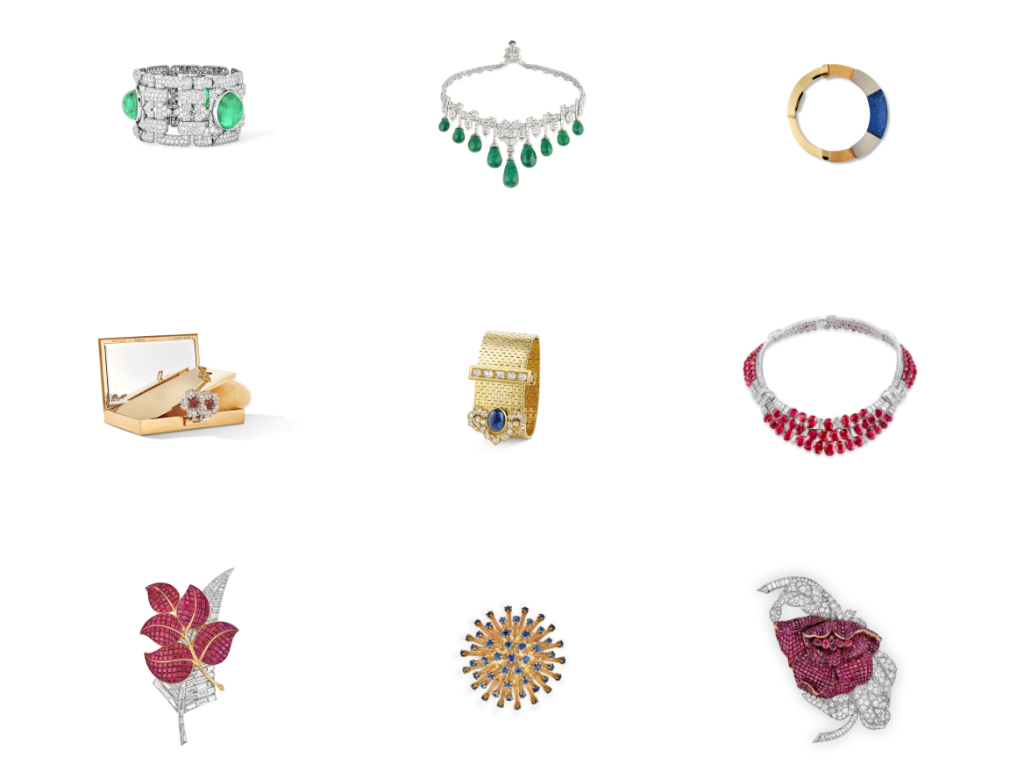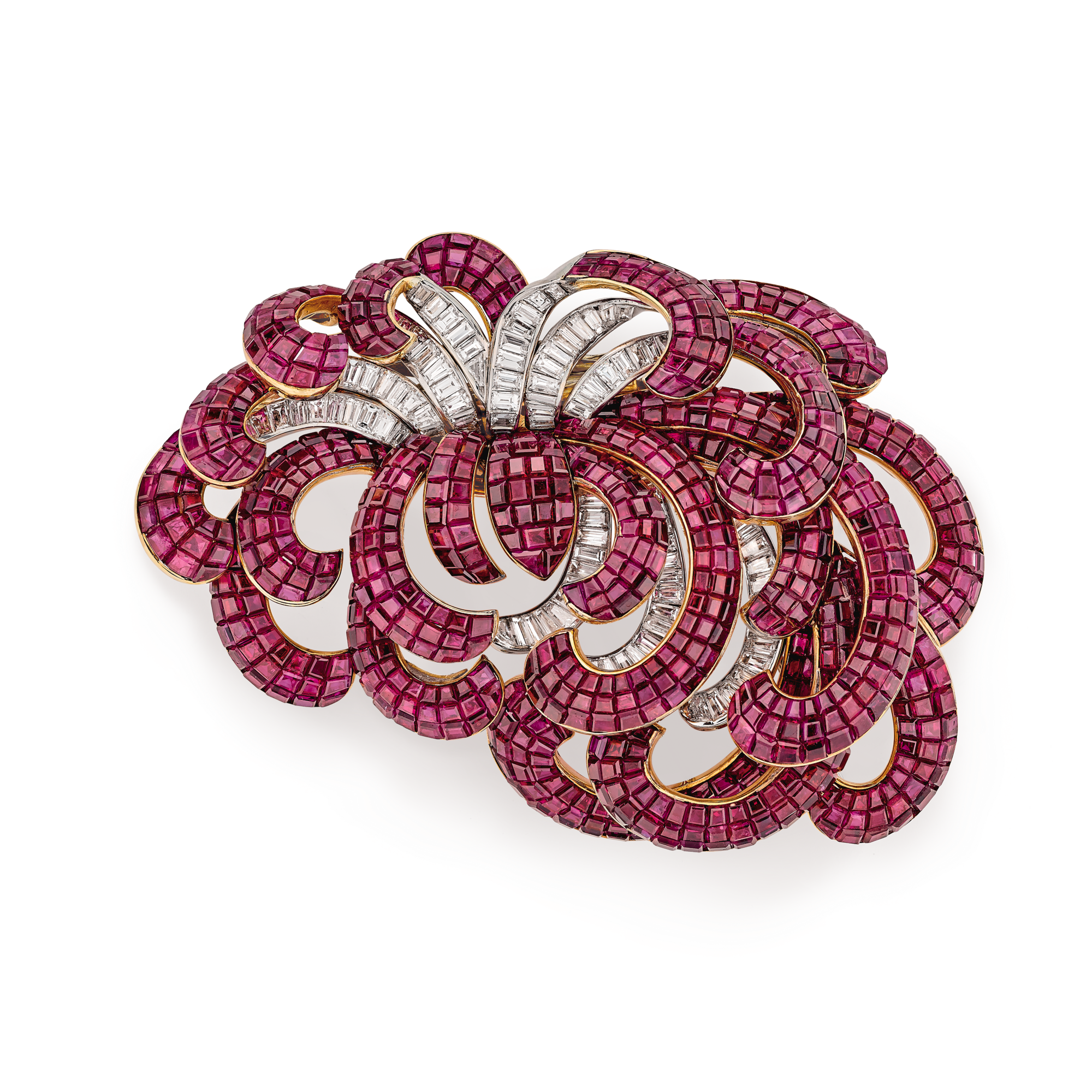
Chrysanthemum clip

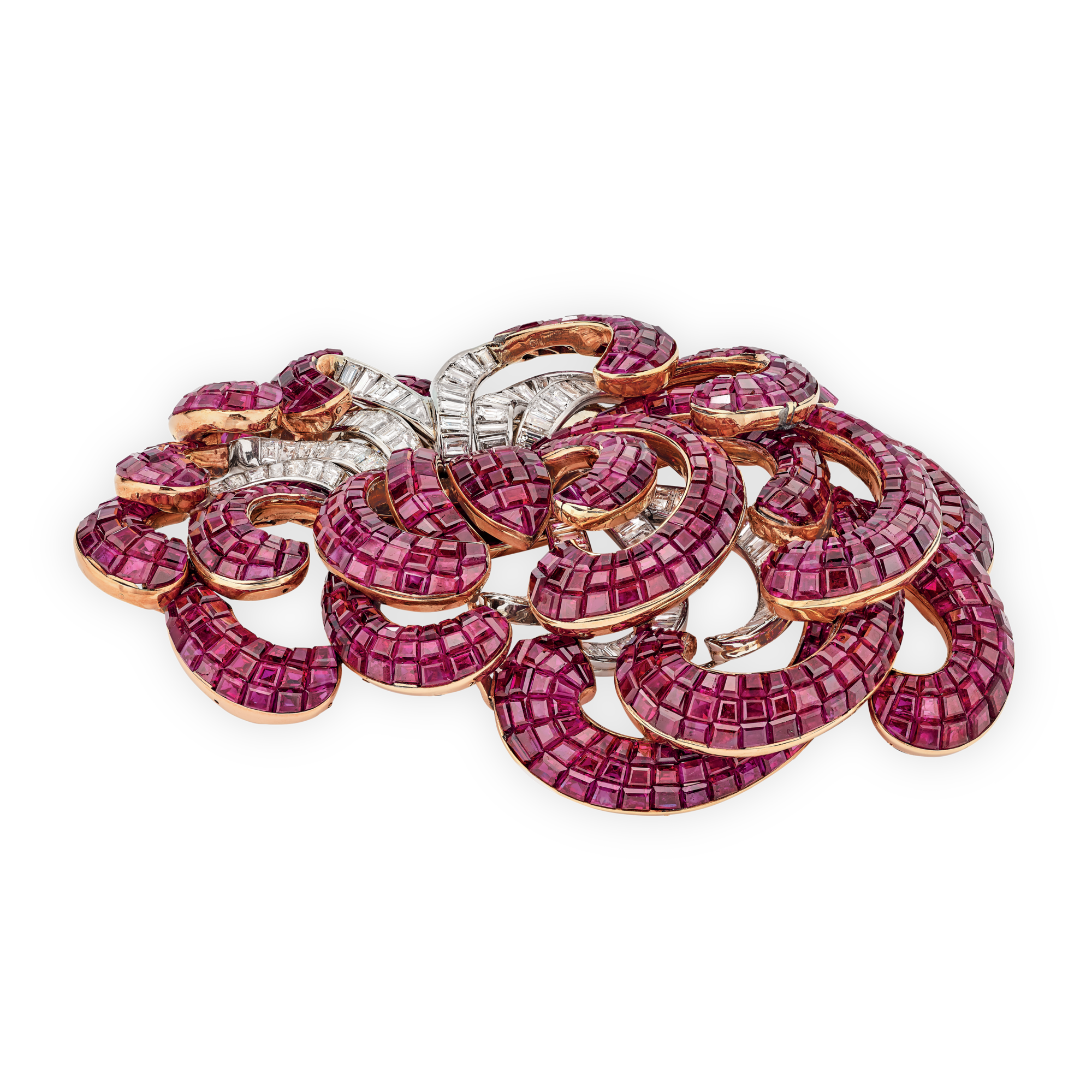
Creation details
- Creation year 1937
- Usage Clip
- Dimensions 62 × 89 mm
The Chrysanthemum clip combines the floral esthetic of Art Deco with the art of setting stones, and “clearly illustrates the result of the alliance of stylized art and technical genius”1Anonymous, “Informations,” Le Figaro (August 6, 1937): 2..
The flower’s highly distinctive petals are captured here in all their graceful luxuriance, their tips curving slightly inward. The Maison’s designers gave free rein to their imagination in capturing the very essence of the corolla’s silhouette. A continuous pave-setting of rubies mounted on yellow gold is used for the upper side of the petals while the composition’s profusion affords glimpses of their underside, distinguished by the use of calibrated diamonds. The ruby petals, while monochrome, succeed in conveying the flower’s nature thanks to their ability to capture light, thus evoking the texture and nuances of the plant.
The invention of a new jewelry technique
The chrysanthemum, the heraldic insignia of the Japanese emperor, prevailed during the Art Nouveau period, when artists were fascinated by Japan, as well as in Art Deco works of the early 1920s. In this revisited version from the late 1930s, it served as both support and pretext for a remarkable jewelry technique. On December 2, 1933, Van Cleef & Arpels registered a patent under the heading: “Method for mounting precious stones.” This document stated that the invention “consisted of mounting stones so that only the stone was visible, by concealing the material that served as its mount.”2Patent for “Perfecting the methods of setting and mounting stones,” no. 801.863, delivered on May 30, 1936. Paris, INPI Archives. However, this initial patent did not enable “the stones to be placed in keeping with complex curved lines,” as was the case for the Chrysanthemum clip, which is why, on February 13, 1936, the Maison registered a new patent aiming to perfect the earlier one.
Chrysanthemum clip
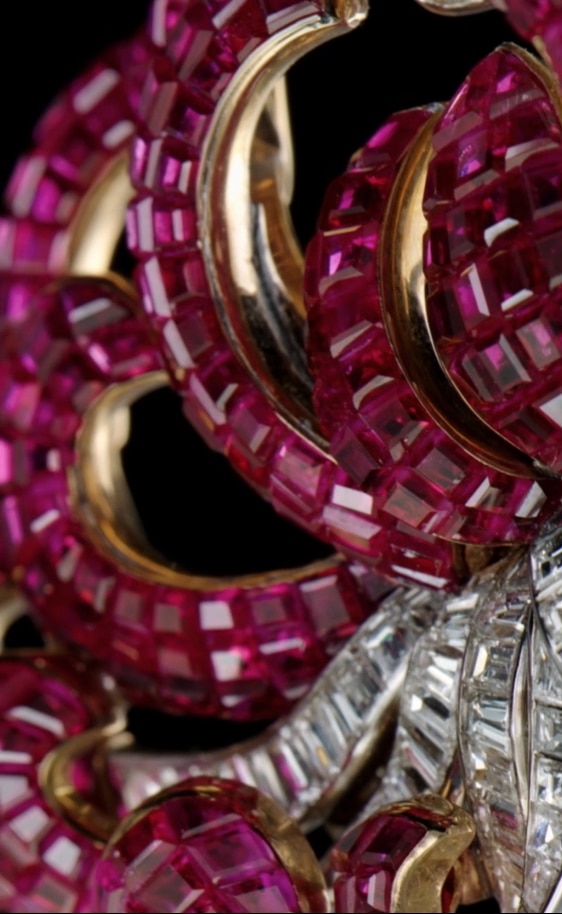
The Exposition internationale in 1937
This new invention benefited from the perfect showcase in the form of the Exposition internationale des arts et des techniques appliqués à la vie moderne that took place in Paris in 1937. There, Van Cleef & Arpels’ display was received with great acclaim: “Nothing is visible in the assembly of the[se] precious stones,” observed a commentator of the Jewelry and Goldsmithery Pavilion. The Chrysanthemum clip is a superlative example of the perfection of the mystery set, and occupied a prime position in Van Cleef & Arpels’ showcase of technical innovations.
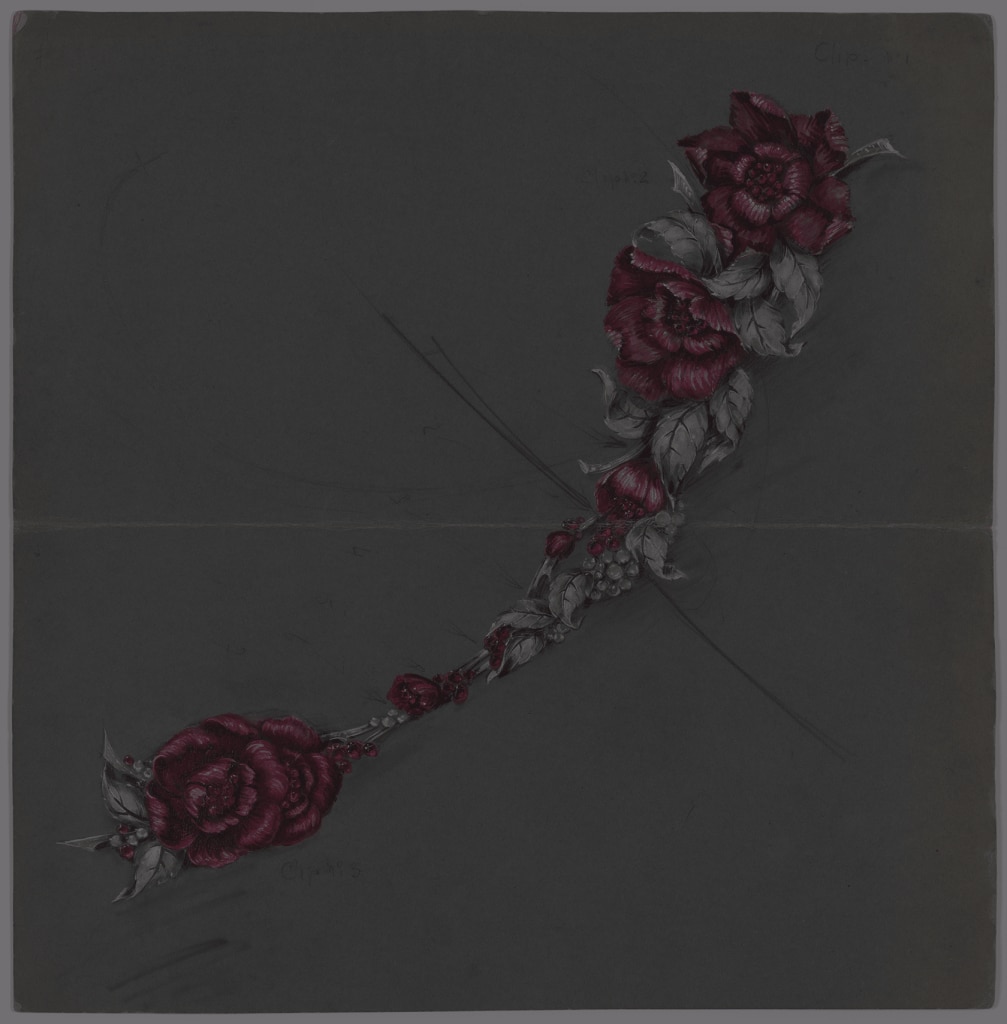
To go deeper
